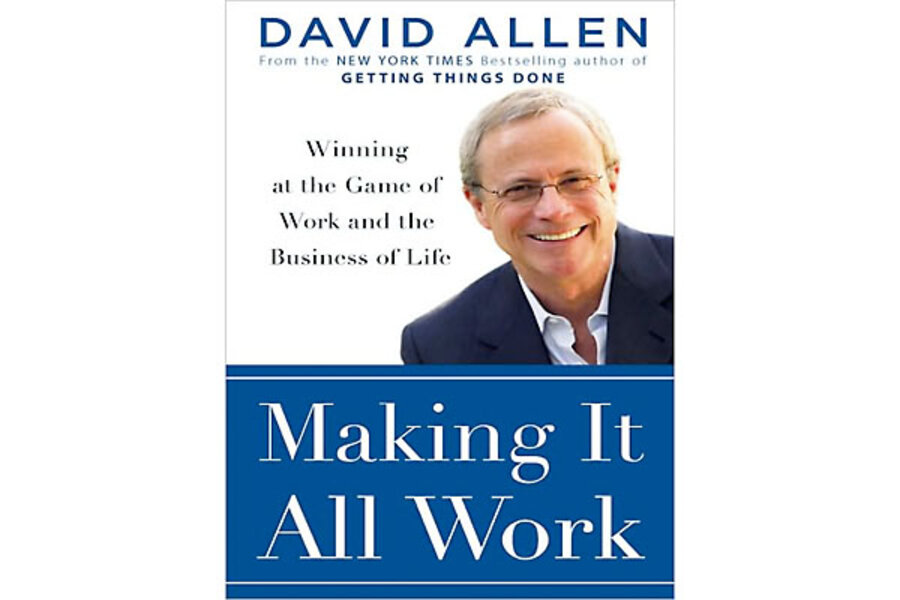Making It All Work – Getting Control: Engaging
Loading...
Engaging?
To put it simply, the fifth (and final) element of positive engagement with your world is just that – actually doing stuff instead of planning. The question, though, is why this has to be mentioned at all. Isn’t the whole point of all of this to set us up to work more effectively?
I like looking at it this way. All of the collecting and organizing and reflecting serves one very specific purpose: it creates a situation so that at any given time, you have a good grasp on the things that are actually worthwhile and important to do. The question then becomes which of those important things you choose to do right at this moment.
Allen calls this a “next action.” On page 172:
The most common cause of a list becoming listless and unispiring is the lack of clarity about what to do about what’s on it.
Imagine you have a to-do list in front of you with twenty five items on it (something that’s a common occurrence for me). They’re items you’ve actually went through the process of determination with and have recognized each of them as being something important. How exactly do you determine which of those twenty five items should actually be done right now?
Allen’s first line of defense here is to make sure that your to-do list actually represents thought-out next actions. On page 174:
The best criteria to determine whether or not you’ve actually thought something through sifficiently to act upon it is how clearly you can answer these three questions:
+ What has to happen first?
+ What does doing look like?
+ Where does it happen?
In short, if you have something on your to-do list that doesn’t have immediate answers to these three questions, then your to-do (or “next action”) list has a problem.
What do you do if you find an item that doesn’t have immediate answers to these questions? You resolve them. Take the item completely off your to-do list and reprocess it. Make sure these three questions are resolved before you re-add an item to your list.
On my own to-do lists, I usually make a direct note of where the thing will happen, because I’ll often group things together by their location. Allen refers to this as “context,” and touches on it heavily on page 182:
There is never a moment at which you could do everything you’ve decided you need to do, simply because most of those actions require a specific tool or location. You have some tasks at your office and others at home, and unless they happen to be in the same place, you are limited in your choice by where you are.
A great example of this is the errands you have on a to-do list.
I live in central Iowa. I run some errands in Ames. I run other errands in Des Moines or a surrounding suburb. It makes sense, when I’m assembling a to-do list, to clearly mark “Ames errand” and “Des Moines errand” next to errands that occur in those areas so I can group them together easily and make only a single trip to Des Moines to take care of several things.
Another “context” I often use is “email.” For me, opening up my email is a gigantic black hole of time, so I often try to do it once a day (or twice a day at most). To make sure I remember to send key emails, I clearly note “email” next to items that require an email to be sent or replied to.
You can use whatever contexts you’d like. The idea is just to make it easy to group obviously related tasks together off of your big to-do list.
Another big question, of course, is how you set the priority of such a list full of items. How can you tell at a glance which one is the most important out of these important things? Allen addresses this on page 190:
Ultimately, you must trust a combination of your intelligence and your intuition. You’ll never be able to integrate enough information consciously and then apply to it some logical or mathematical formula whose results you will always trust implicitly.
In other words, you should just purely trust your intuition. I used to stress out over this part of it quite a bit, but I often find that if I just glance at my list, one particular item will stand out to me pretty quickly, so I do that (and possibly other items in the same context). Then I rinse and repeat.
In other words, the two big keys to having a successful to-do list (once you’ve actually processed everything you need to be doing) is to have very clear things to do (so you don’t have to think about them) and to trust your intuition once you have a list of these clear tasks. I find that it really works for me.
Add/view comments on this post.
------------------------------
The Christian Science Monitor has assembled a diverse group of the best economy-related bloggers out there. Our guest bloggers are not employed or directed by the Monitor and the views expressed are the bloggers' own, as is responsibility for the content of their blogs. To contact us about a blogger, click here. To add or view a comment on a guest blog, please go to the blogger's own site by clicking on the link above.





